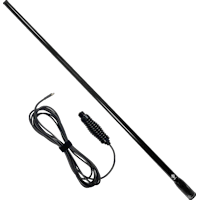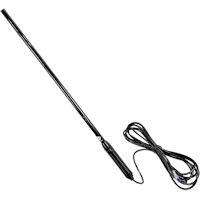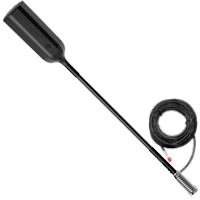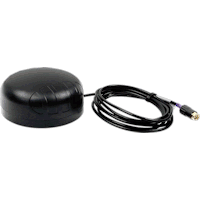Top 5 Cell Signal Booster Vehicle Antennas for 2025

Updated
Need to improve your cell signal booster’s reception on the road?
A mobile cell signal booster can only amplify the signal that it receives from its external donor antenna. Adding a higher-gain donor antenna to your cellular booster system can improve the booster’s performance and allow you to travel in more remote areas with weak outside cell signal.
Powerful Signal has tested the top mobile cell phone signal booster antennas from leading manufacturers. Here are our top five recommended antennas for this year, sorted by price:





Nominal Gain,2 dBi
Peak Gain,3 dBi
Notes
1 Gain describes how well the antenna diverts, directs, or concentrates radio waves into electrical power (when it’s receiving) and electrical power into radio waves (when it’s sending). (Learn more.) Antenna gain is measured in decibels (isotropic) (dBi), which is the gain of the antenna compared to the gain of a theoretical isotropic antenna that uniformly distributes energy in all directions, calculated in decibels. The decibel scale is logarithmic: An increase of 3 dBi is double the gain, an increase of 10 dBi is ten times the gain, and an increase of 20 dBi is one hundred times the gain.
2 Omnidirectional antennas send and receive signal in all directions, but they have more gain (are more efficient) in some directions and have less gain (are less efficient) in others. Nominal gain is the average of the antenna’s gain in all directions. Some directions will have higher than nominal gain (see peak gain, below); other directions will have less than nominal gain. Some antenna manufacturers prefer to publish peak gain figures instead of nominal gain figures.
3 Peak gain is an omnidirectional antenna’s maximum gain in its most efficient direction. Since the direction of peak gain may not be the direction of the cell tower, peak gain figures should be used cautiously; an antenna will most often not be sending/receiving at peak gain. Some antenna manufacturers prefer to publish nominal gain figures instead of peak gain figures (see nominal gain, above).
4 Negative gain indicates that the antenna does not radiate as well as a theoretical isotropic antenna. The antenna still sends and receives at this frequency range; it’s just not as efficient in a range where it has negative gain. Small antennas are often only efficient in a narrow frequency range and more susceptible to having negative gain outside that range.
5 Voltage Standing Wave Ratio (VSWR, “viz-wer”) is a ratio that describes how well the antenna’s impedance is matched to the impedance of its transmission line (coaxial cable). The lower the first number in the ratio, the more power is delivered and the less is reflected. A VSWR of 1.5:1 is better than 2:1, and a VSWR of 2:1 is better than 3:1. (Learn more.)
6 Powerful Signal offers a 90-day return on most products. (See our return policy.)

